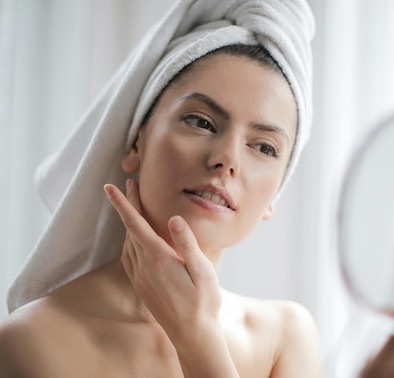
Aoife Hoban shares her expertise on managing and reducing hyperpigmentation and melasma
This July, we want to raise awareness about Hyperpigmentation and Melasma, which is particularly relevant given the increased sun exposure many people experience during the summer months. Educator for O Cosmedics Ireland, Aoife Hoban, has shared her expertise with us to help individuals manage and reduce the impact of hyperpigmentation and melasma.
For many skincare enthusiasts, dealing with skin discolouration can be frustrating and challenging. Hyperpigmentation and melasma are two common skin conditions that often get lumped together, but they are triggered by two separate issues.
Hyperpigmentation is the term used to describe darkened areas of the skin caused by an excess production of melanin. These dark spots can be triggered by factors such as sun exposure, inflammation, or skin injuries. Melanin production is our bodies’ way of protecting our cells from DNA damage. Leaking pigment can be the result of too much UV exposure causing damage to the cell. This damage will appear as freckles, sunspots and age spots on our body.
UV Damage Solutions
Protecting your skin from UV damage is crucial for addressing hyperpigmentation. Start by using a physical SPF. I encourage the use of physical suncream instead of a chemical one to prevent further free radical damage to the skin cells. I personally use the O Cosmedics Mineral Pro SPF 50 every single morning underneath my make up.
Hyperpigmentation can be treated with the following homecare products,
- Lactic Acid
- Vitamin B3 serum
- Vitamin C serum
- Vitamin A
- A physical SPF
- A hat and sunglasses are also necessary when in the sun. Your eyes register you are in the sun, sending a signal for pigment to be produced for the skin to protect itself.
Melasma is a specific type of hyperpigmentation that is more complex and often more challenging to treat. It appears as symmetrical, dark patches on the face, typically on the cheeks, forehead, and above the upper lip.
Melasma is triggered by the Melanin Stimulating Hormone (MSH). 30% of women have a genetic predisposition to produce excess MSH when pregnant, on hormonal contraception or taking HRT. This makes melasma particularly stubborn and notoriously difficult to manage. Melasma Solution
Managing melasma requires a more targeted and comprehensive approach. The hormone trigger needs to be addressed to get results with Melasma. SPF in a physical form is absolutely essential, as exposure to UV rays can exacerbate melasma. Other ingredients to include in your homecare routine would be,
- Lactic Acid
- Vitamin C serum
- Vitamin A
- A physical SPF
It is important to note that treating melasma can be a long and ongoing process, and patience is key.
In conclusion, understanding the distinction between hyperpigmentation and melasma is vital for implementing the right skincare regimen. While hyperpigmentation can be triggered by a variety of external factors and is generally more responsive to treatment, melasma is a more complex condition influenced by hormones and sun exposure. Remember, consistency and sun protection are key components of any successful hyperpigmentation and melasma treatment plan.
O Cosmedics is now available from zolobeauty.com and official O Cosmedics salons nationwide.






